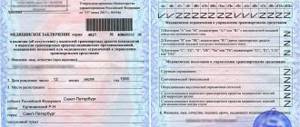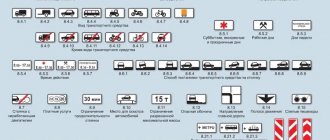According to the law, any vehicle must have an MTPL policy, which guarantees the innocent party compensation in the form of repairs or cash payments. The maximum amount of compensation for compulsory insurance is fixed and amounts to 400 thousand rubles. If the car repair exceeds this value, there are several options for receiving the remainder: negotiate with the culprit, go to court, or, if you have a CASCO policy, receive payment from the insurance company. In this case, the company that issued the policy can recover these funds from the culprit through the procedure of subrogation.
What is subrogation
Subrogation under CASCO is a transfer, permitted by law, of the insurance company's right to claim compensation for damage associated with damage to another vehicle from the client who received payment under the policy. If the certificate owner is at fault for the accident, no claims will be made.
To compensate for damage, the organization will first try to resolve the issue without going through legal proceedings, since this is always an extra expense. Often it is more beneficial for both parties not to bring the case to court. In order to notify the culprit of the accident about the intention to recover money, the company will send him a letter where he will provide the necessary documents, expert opinions and indicate the amount that he wants to receive as compensation.
Limitation period for subrogation under CASCO
For relations arising from subrogation, established by Art. 966 of the Civil Code of the Russian Federation does not apply to a two-year statute of limitations. As the Plenum of the Supreme Court of the Russian Federation explained in paragraph 10 of its Resolution No. 20 dated June 27, 2013, a change of persons in an obligation (Article 201 of the Civil Code of the Russian Federation) according to the claims that the insurer, by way of subrogation, has against the person responsible for losses compensated as a result of insurance, does not entail a change in the general (three-year) limitation period and the procedure for its calculation.
Ask your question to a lawyer right now
Plaintiff's claim
LLC "SK "name of organization" filed a claim against Shch. for compensation by way of subrogation for damage caused as a result of a road traffic accident (accident) in the amount of... rub., legal expenses for payment of state duty in the amount of... rub., indicating that for damage to property as a result of an accident that occurred through the fault of the defendant, the insurance company paid P.A. under a voluntary vehicle insurance agreement. insurance compensation in the amount of... rub., of which the difference between the insurance compensation under the voluntary insurance contract (....) and the limit of insurance compensation within the framework of compulsory motor liability insurance by virtue of Art. 965 of the Civil Code of the Russian Federation is subject to recovery from the defendant.
The defendant in the court of first instance did not agree with the claim.
The court involved P.A. in the case as a third party, considered the case without the participation of the plaintiff and the third party, who were notified of the time and place of the court hearing, and adopted the above decision, the cancellation of which, as illegal and unfounded, Shch asks. in his appeal.
Conclusions of the court in the case
Having checked the legality and validity of the court's decision within the limits of the arguments of the appeal in accordance with Art. 327.1 of the Civil Procedure Code of the Russian Federation, the judicial panel does not find any grounds for canceling the decision that is essentially correct.
In accordance with Part 1 of Art. 965 of the Civil Code of the Russian Federation, to the insurer who paid the insurance compensation, within the limits of the amount paid, the right of claim that the policyholder (beneficiary) has against the person responsible for the losses compensated as a result of insurance is transferred.
Article 1064 of the Civil Code of the Russian Federation provides that harm caused to the person or property of a citizen, as well as harm caused to the property of a legal entity, is subject to compensation in full by the person who caused the harm. The person who caused the harm is released from compensation for harm if he proves that the harm was not caused through his fault.
It was established that <Date is impersonal> at... hour. near <Address anonymized> driver Shch., driving a car... lost control and hit a car standing on the side of the road..., owned by P.A.
The victim’s car was insured under a voluntary vehicle insurance agreement (CASCO) for the risk “Damage and theft” at LLC “Name of Organization”. The case was recognized as an insurance payment order dated <Date anonymized> <Number anonymized> by plaintiff P.A. funds were transferred in the amount of... rub.
Resolving a dispute under established circumstances and assessing the evidence presented in the case in accordance with the requirements of Art. 67 of the Civil Procedure Code of the Russian Federation, the court of first instance came to the correct conclusion that LLC “Name of the Organization”, which paid insurance compensation to a third party on the basis of an insurance contract, has the right to demand recovery of the amount of losses from Shch. by way of subrogation. At the same time, despite the presence of a ruling on the refusal to initiate a case of an administrative offense due to the absence of an administrative offense, issued <Date anonymized>..., the court of first instance rightly indicated that the culprit of the accident was Shch., who, in violation of the requirements... of the Rules traffic driver incorrectly chose the vehicle speed, did not take into account road and meteorological conditions, lost control and allowed him to drive into oncoming traffic, where he collided with a stationary insured vehicle.
Refusing to satisfy the defendant's request to apply the consequences of the insurance company missing the statute of limitations, the court of first instance, citing the provisions of Art. Art. 387, 965 of the Civil Code of the Russian Federation, properly proceeded from the fact that for relations arising from subrogation, established by Art. 966 of the Civil Code of the Russian Federation does not apply to a two-year statute of limitations.
As the Plenum of the Supreme Court of the Russian Federation explained in paragraph 10 of its Resolution No. 20 dated June 27, 2013 “On the application by courts of legislation on voluntary insurance of citizens’ property”, a change of persons in an obligation (Article 201 of the Civil Code of the Russian Federation) according to the requirements that the insurer, by way of subrogation, has to the person responsible for losses compensated as a result of insurance does not entail a change in the general (three-year) limitation period and the procedure for its calculation.
Based on Art. 98 of the Civil Procedure Code of the Russian Federation, the court collected from the defendant in favor of LLC “name of organization” a state duty in the amount of... rubles.
The panel of judges agrees with these conclusions of the court, since they are based on the correct application of substantive law and correspond to the actual circumstances of the case.
The arguments of the appeal boil down to the defendant’s disagreement with the court’s conclusions, but do not essentially refute them; they do not contain legal grounds for canceling or changing the decision; they repeat the position stated by the defendant, which was the subject of research and assessment by the trial court. The judicial panel does not see any grounds for a different assessment of the evidence examined by the court.
In accordance with Art. Art. 12, 56, 57 of the Civil Procedure Code of the Russian Federation, justice in civil cases is carried out on the basis of adversarial proceedings between the parties; each party must prove the circumstances to which it refers as the basis for its claims and objections; evidence is presented by the parties.
At the same time, as can be seen from the case materials, Shch., who caused damage to P.A.’s property, did not provide the court with adequate evidence confirming the absence of his guilt in causing this damage.
In view of the above, contrary to the arguments of the appeal, the grounds for canceling the court decision provided for in Art. 330 of the Civil Procedure Code of the Russian Federation, not available.
Judicial practice on subrogation
Subrogation under CASCO including wear and tear
When determining the amount of property damage to be compensated, it is necessary to take into account the wear and tear of the damaged property in order to provide the victim with the opportunity to restore his violated right in full by bringing the property to its previous condition, excluding unjust enrichment on his part.
Refusal of subrogation if the CASCO policy does not limit persons
The voluntary vehicle insurance policy provided for a condition regarding persons allowed to drive a vehicle - an unlimited number of persons.
Claims of the insurance company by way of subrogation against the policyholder's spouse
Considering that the insured property is the joint property of the spouses, full name, then P.M.V. in this case, he is the victim and the causer of harm at the same time.
Under such circumstances, the district court came to the correct conclusion that the full name does not have the right to claim damages against his wife and the claims filed by the insurance company cannot be satisfied.
The policyholder's spouse is not indicated in the CASCO policy; the car is the joint property of the spouses
The panel of judges rejected the arguments of the appeal that damages by subrogation are not subject to recovery from the defendant on the grounds that she is the wife of the owner of the vehicle.
The car is the common property of the spouses, purchased during marriage
The court indicated that the defendant’s argument that she is in a registered marriage with F. (the policyholder under a voluntary insurance agreement) is not significant and is not a basis for refusing the claim by way of subrogation.
The car was given to the daughter by the policyholder
From the car donation agreement it is clear that M A.Yu. presented to S.T.A. automobile. The defendant used the vehicle lawfully and has an interest in preserving this property, and therefore the insurance company does not have the right to demand recovery from S.T.A. the amount of insurance compensation paid by way of subrogation
Application procedure
Before submitting a claim to the driver, the insurance company must take a number of actions aimed at assessing the damage to the insured car. After this, all documents confirming the validity of the amount are presented to the defendant.
The CASCO 2021 rules for subrogation include the provision of a complete list of documents from the insurance company:
- documents on the basis of which the payment amount is determined:
- the certificate of inspection of the car by the expert commission and the conclusion issued by it;
- a full calculation of how the amount stated in the claim was received with attached photos of parts damaged in the accident;
- a certificate from the traffic police, which confirms the fact of the accident and identifies the person at fault.
- Documents that confirm the right of the insurance company to apply subrogation:
- PTS;
- a copy of the policy of the client who received payment/repair from the insurance company;
- receipt confirming payment;
- application from the client for compensation in the event of an insured event.
The subrogation procedure also provides for a feature in which the insurer can make monetary claims against the culprit only after it has compensated all costs to the victim. And the amount of the penalty against the defendant should not exceed the amount of the payment.
Attention! If the insurance organization has not sent the list of documents described above, this does not mean that the culprit can ignore the letter. In this case, you should contact the company yourself. It is much better to start a dialogue in time and come to a consensus, since it will not be possible to avoid litigation in one form or another.
The procedure for subrogation under compulsory motor liability insurance
Insurance subrogation is manifested in compensation to insurers for losses incurred in a road accident. The procedure for subrogation under OSAGO looks like this:
- The culprit and the victim in the accident are being identified.
- In accordance with the law, the victim has the right to contact the culprit of the accident or his insurer regarding compensation for damage.
- If the policyholder appeals to the insurer for payment and the damage is fully compensated, the insurer acquires the right to demand compensation from the guilty party.
- In fact, subrogation is the replacement of the injured party, whose place is taken by the insurer after the payment has been made.
It is in this order of subrogation that compensation for damage in case of an accident is carried out. Subrogation is a risk that every at-fault party should be wary of when causing damage to the victim. If the latter has an insurance contract.
Whenever possible to make a corresponding claim, the insurance company will definitely do so.
Initially, a subrogation claim will be made against the at-fault driver's insurer, and if the claim exceeds the insurance coverage, the claim will be made against the at-fault driver.
Documentation
The insurance company is obliged to confirm its claim against the at-fault motorist with the following documents:
- confirmation of the existence of an insurance contract concluded with the victim and valid at the time of the accident;
- documents from the traffic police that confirm the fact of the accident;
- confirmation of the driver’s guilt;
- conclusion of an examination of the damage, calculation of the cost of restoration, an acceptance certificate for the transfer of repair results;
- confirmation of payment of damage.
Basic conditions of subrogation in case of an accident
Depending on the type of accident and the determination of the at-fault party, there are several features that affect the amount of payment and the claims that the insurance company may make. Some cases are regulated by separate clauses of legislation:
- The insured person is not the culprit of the accident - the entire amount in excess of 400 thousand rubles under compulsory motor liability insurance will be claimed from the person for whose cause the accident occurred.
- The insured person is the cause of the accident - no recovery will be made.
- The culprit of the accident was the driver while performing official duties using a vehicle to which the right of subrogation does not apply. The employer will be responsible.
- If the accident was caused by a technical malfunction of a company car, compensation will be demanded from the organization (person) that carried out the technical inspection.
- If the actions of both drivers caused a traffic accident, the culprit uninsured under CASCO will be liable in the amount of 50% of the damage paid to the policy owner.
When does subrogation arise?
Vehicle owners learn what subrogation is only when they become the culprits of a traffic accident. After all, it is CASCO, and not OSAGO, that represents insurance of a car as property.
If the guilty party, within the framework of the law, has a compulsory motor liability insurance policy, then it will cover part of the costs. But do not forget that payments for the mandatory product are strictly limited. It is no secret that there are a lot of expensive cars on the road and the amount of damage may exceed the limit for payment under the compulsory motor liability insurance agreement.
It turns out that the higher the cost of the vehicle, the higher the likelihood that the guilty party will have to compensate part of the costs from its own funds.
So, subrogation occurs at the moment when, after an accident, the injured party, who has compulsory motor liability insurance and comprehensive insurance, contacts the company and decides to receive compensation only for a voluntary product. This choice is explained by the fact that the victim under CASCO can repair the car at the station in a few days, which is not provided for under OSAGO.
After payment, the insurer sends a claim to the culprit, indicating the amount that was paid to restore the damaged car. Of course, some or all of the damage may be covered by insurance coverage under compulsory motor liability insurance. But if the amount of damage exceeds 400 thousand rubles, then the exceeded limit must be compensated by the guilty party voluntarily.
If the culprit does not transfer the funds within the established time frame, then the insurance company has the right to go to court and collect everything in court.
Statute of limitations
The statute of limitations for subrogation, as in other civil cases, is three years. If for some reason the insurer remembered his right to claim after a longer period of time, he lost this opportunity. In this case, the claim should be answered by pointing out the fact that the agent’s actions have no legal force.
Attention! If you ignore the letter, you may receive a subpoena where you will have to prove that the statute of limitations has expired and the insurer’s claims are not justified. This can be done, but it is easier to respond to the letter before the organization goes to court.
The Supreme Court dealt with the statute of limitations for subrogation
From what point should insurers start the statute of limitations to recover damages from the person at fault? From the date of occurrence of the insured event or from the moment the court determines the person responsible for the damage? The Supreme Court sought answers to these questions .
In August 2010, the passenger ship Sergei Kirov and a dry cargo barge collided on the Rybinsk Reservoir. The court equally distributed responsibility for losses between the shipowners - Passenger Fleet LLC (motor ship) and (barge). Passenger Fleet insured possible damage to its ship with five foreign reinsurers. They recognized the collision as an insured event and calculated the amount of payment due to the beneficiary - Viking River Cruises Ltd (the lessee of the vessel, which provided its insurance). In total, the insurers paid him compensation in the amount of $392,921. At the same time, they decided that the owner of the barge - MVK - should compensate for the damage caused according to the degree of his guilt, and filed claims with the Autonomous Insurance Agency of the Yaroslavl Region (they were combined into one case No. A82-12296 /2014).
The court satisfied the claims of the insurers and recovered $166,990 in their favor. The appeal and cassation subsequently strengthened this decision. The courts decided that the insurers, who compensated the beneficiary for the damage, transferred the right of claim against the person responsible for the losses. At the same time, all three authorities rejected the defendant’s arguments about missing the statute of limitations (the collision of the courts occurred in 2010, the claims were received in court in 2014). The courts indicated that the right to bring a claim by way of subrogation [transfer to the insurer who paid the compensation the right to demand compensation from the person responsible for the damage caused to the insured] arose with the insurers from the moment the decision of the 2nd AAS dated October 28, 2013 (No. A82-441/2011), who admitted the mutual guilt of the owners of the ship and barge.
appealed the acts of all three authorities to the Supreme Court. She insists on missing the statute of limitations, which, in her opinion, should be calculated from the moment the insured event occurred. The company believes that the wording of Art. 200 of the Civil Code, in force at the time of the collision, and Art. 164 of the Inland Water Transport Code, which the courts referred to, do not connect the beginning of the limitation period with the moment the person responsible for the damage is determined. In addition, the applicant points out that mutual guilt in the collision of ships was established in the resolution in the case of an operational incident, which became the subject of the court's study in the claim of Passenger Fleet against MVK for the recovery of damages (No. A82-441/2011). Taking this into account, the applicant summarizes, the plaintiffs, based on the materials of the case about the operational accident, had the opportunity to seek protection of their rights within the statute of limitations - within two years from the date of the collision. Following the results of the meeting held on June 22, the Economic Board of the Supreme Court canceled the acts of lower authorities and refused to satisfy the claims of the insurers.
- Insurance, Courts and Judges
- Supreme Court of the Russian Federation, Collegium of the Supreme Court for Economic Disputes, Arbitration Court of the Yaroslavl Region
Consequences for the victim and the perpetrator
There are cases when the policyholder may demand reimbursement of expenses from the victim in whole or in part. This is possible if the victim, when registering the accident, indicated that he has no claims against the culprit. Or provided the insurance agent with incomplete information necessary for the right of subrogation to arise. Then the policy owner will have to pay.
Therefore, you need to take a responsible approach to filing an accident and fully satisfy all the requirements at the request of the insurance company so that unpleasant situations do not arise in the future.
Pre-trial proceedings
Most insurance companies prefer not to take the case to court, as this is an unnecessary financial and time expense. Therefore, often, if the amount of claims is minimal, they may not collect anything at all. If the investment is significant, then first the culprit will be called to the company’s office to resolve the issue.
In most cases, this is the best option for both parties. You can agree on both a reduction in the amount you have to pay and an installment plan. In addition, it is worth checking the validity of the claims made by the insurer, since sometimes the required compensation is overstated. And if you can refute some claims yourself, then to prove others you have to resort to the assessment of independent experts.
It is important to know! Pre-trial practice of subrogation under CASCO, in most cases, reduces to zero the parties' claims against each other. The easiest way for the defendant to evade payment is if the statute of limitations for subrogation has passed. In this case, the insurance company usually has nothing to object to.
How to reduce insurance requirements
It is possible to reduce the amount if the statute of limitations against the culprit for subrogation after payment of compensation to the victim under the CASCO certificate has not yet expired. In this case, the defendant will be required to take active action not only when drawing up an accident report, but also afterwards, when assessing the damage that the victim will suffer.
To do this, the culprit should prepare objections:
- If guilt is attributed incorrectly, appeal the decision in court. If the court of first instance refuses, you need to appeal to the supreme court;
- If available, we present evidence indicating third-party circumstances that influenced the driver’s actions, which resulted in an accident;
- It is better to be personally present during the assessment of the injured party’s car to make sure that only damage received during the accident will be taken into account;
- It is also necessary to check that the report describes only the damage described above;
- Check that the same details do not appear several times in the calculation.
- Make sure that the assessment takes into account wear and tear of parts.
Subrogation is a common practice. If the driver causes an accident, you should be prepared for the fact that you may receive a letter from the insurance company, which in no case should be ignored. The size of the final amount, according to judicial practice, can be reduced tens or even hundreds of times.










